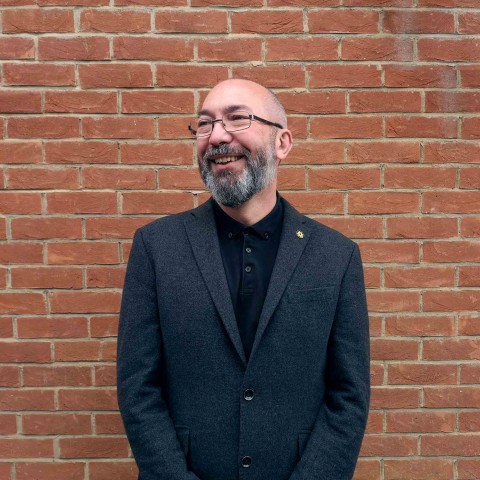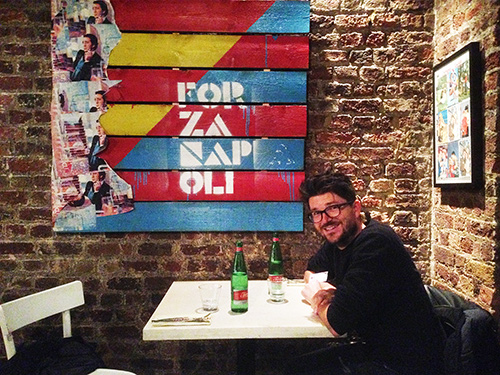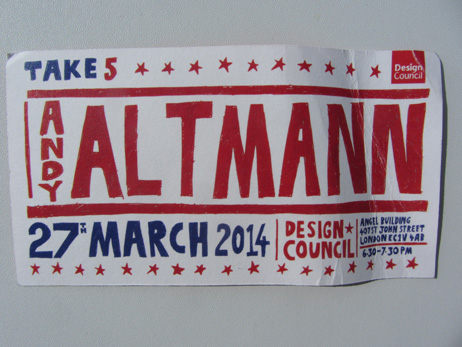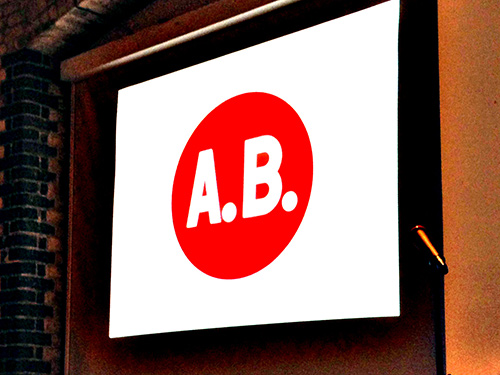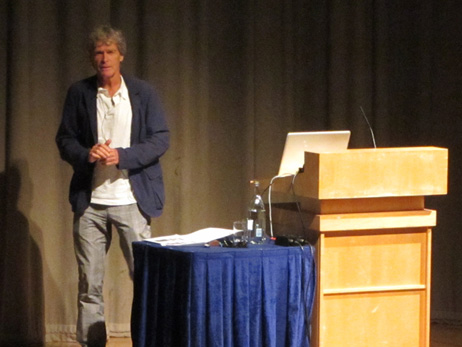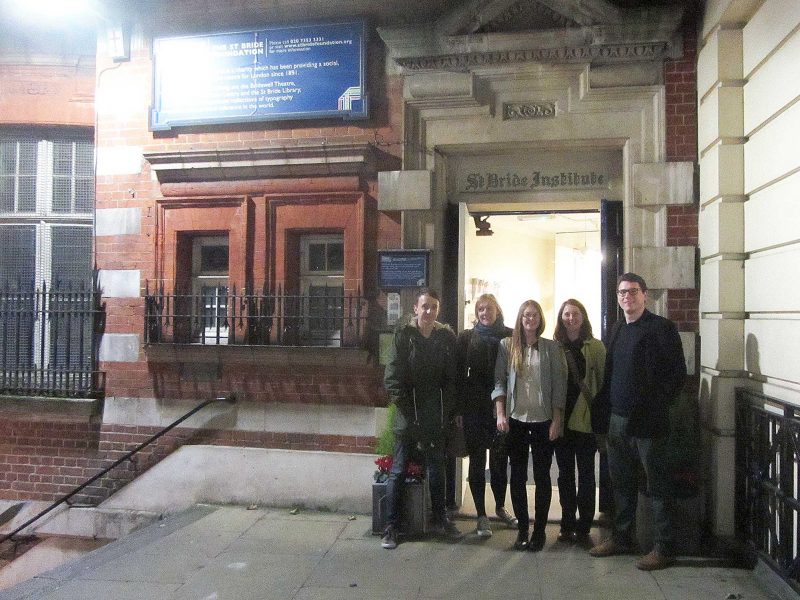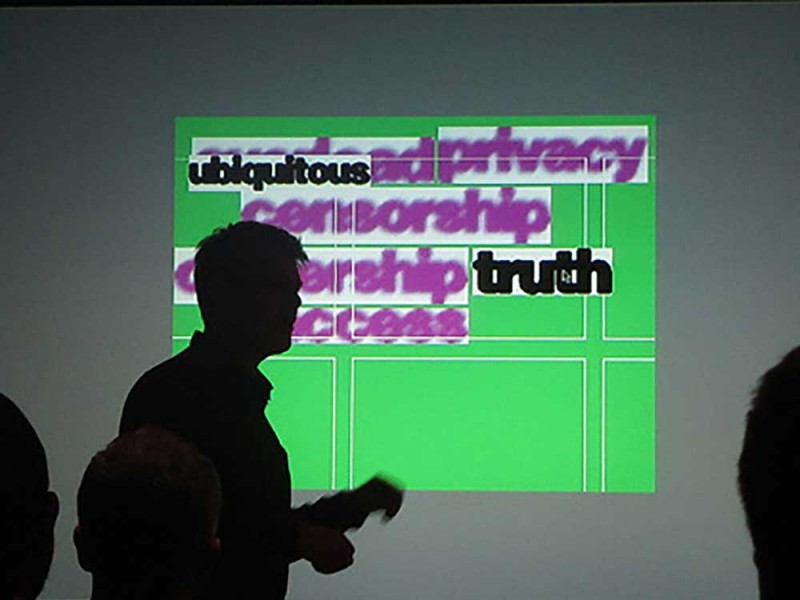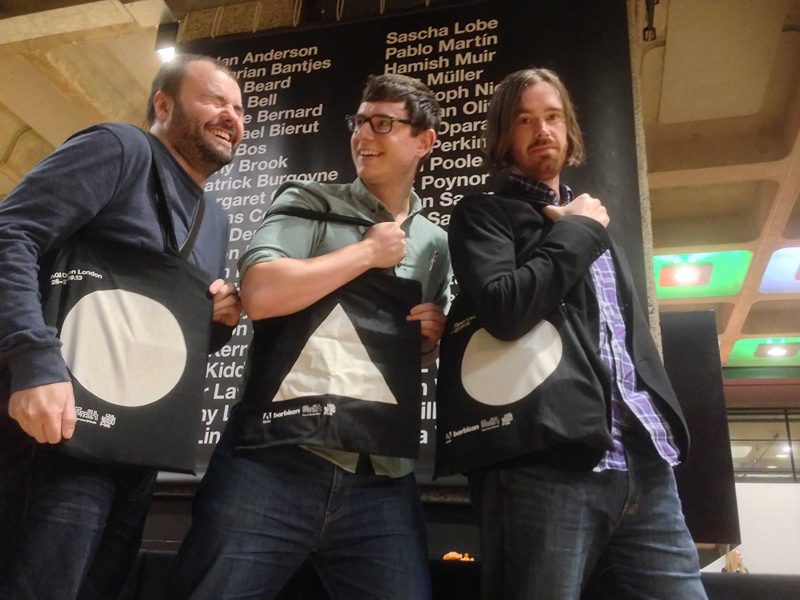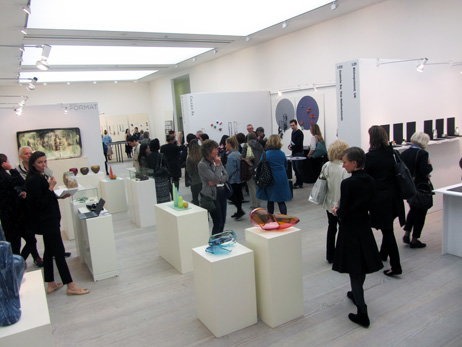As part of their regular series of short talks, Design Council asked Ben Wright, co-founder of DesignStudio, to Take 5. Michael was there to hear what he had to say.
Ben Wright at Design Council
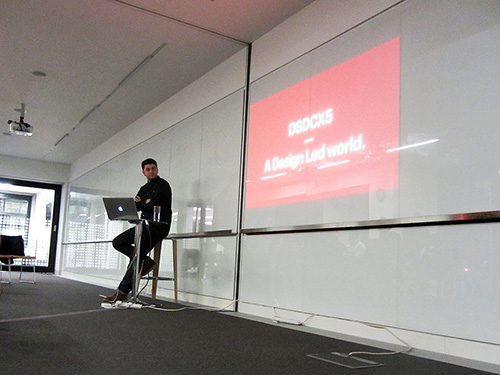
With co-founder Paul Stafford, Ben Wright set up DesignStudio in 2008. They first came onto my radar in 2013 when, as well as having a great name, their agency’s website seemed to have set the standard for designers. They seemed very cool but I wasn’t quite sure what they did, although they did seem to place a high value on crafted communications.
A year later, DesignStudio’s rebrand of Airbnb was everywhere. The design press loved it, bloggers loved it or loathed it, people were setting up Tumblr accounts to hold the multitude of parodies. The Airbnb branding was a sensation, a moment, a design happening.
By the end of the year ex-Cogger James Hurst had joined their team as Digital Creative Director. He’d told me a little about their set up and the inspirational men who’d founded the company. So when Design Council announced that Ben Wright would be the next speaker in their Take 5 series, I rushed to get a ticket.
I probably didn’t need to rush. As usual at these things, it was busy but it was far from sold out. The audience was very young (I’m confident that I was the oldest person in the room). I suppose London is always buzzing with interesting events but I’m always amazed that so few designers (especially those in their mid-career) seem to want to learn from their peers or seek inspiration from others.
Take 5 is an odd format. I completely get that you need a format, otherwise people ramble or run through the same old slide-show of past glories. But it does feel a little like someone thought of a title and built the format around it.
Speakers tend to put their own spin on the title, I saw Andy Altman pick his five favourite Erics as touchstones for his talk. Ben Wright took a more traditional approach of five headings under the title – A Design Led World.
1. Who are DesignStudio?
Ben began by giving us a little history about his agency. He and Paul Stafford had left their in-house jobs at Nokia to start out on their own. They’d saved £5K and rented two desks in a shared studio. For the first month they had no work at all. Then an ex-colleague from Nokia offered them a job, positioning logos on a Powerpoint presentation. It was hardly the glamorous design work they’d hoped for but it paid bills and it opened a door. They built on that relationship and it led to more and more work until Nokia became one of their core clients.
According to Ben, DesignStudio set out to fill a gap; big agencies were great at strategy but seemed not to care about execution. Boutique, ‘print-sniffing’ agencies were all about the craft but couldn’t scale up to service large branding projects. They wanted to build a design led studio that would bridge the gap.
It’s always difficult to know how much of any back-story is creating a rational narrative from what can be impulsive and intuitive decisions. ‘It feels like the right time, we get on, let’s start our own company’ seems to me like a perfectly acceptable starting point from which to then build a business. But maybe Paul and Ben really did have that vision. I was impressed by them before; I’m in awe of them if they really did spot and exploit that gap.
Added to the narrative, Ben explained the company’s three ways of working in branding: create, evolve and express. DesignStudio can create brands from scratch, evolve and build on existing branding, or take established brands and help them to express their personality through different touch-points.
2. Creating a design led agency
Jumping back in the story, Ben talked a little about his history. His story resonated a little with me as he’d begun with a BTEC diploma in graphic design (as I had). There was a room of blank faces when he asked if anyone knew what a BTEC diploma was. He went on to do a degree at Scunthorpe (not one of the UK’s most fashionable creative universities).
He spoke most passionately about the spread of skills in the studio now. He is only really comfortable using InDesign although he’d originally trained using QuarkXpress (cue lots more blank faces from the very young audience). His studio works across all touch-points so they have video production, computer-graphics, coders, designers, project-managers and many other disciplines all within the relatively small team.
3. Rebranding a design led business
DesignStudio began in London and now have a second studio in San Fransisco. Why there? Ben and Paul have always felt an affinity with San Fransisco because businesses think differently there. They love working with businesses headed-up by designers, or being commissioned by in-house design teams.
Ben spoke at length about their work with Airbnb, which was founded by designers who really embraced the branding process. Tongue-in-cheek, Ben explained the value of branding and how the Airbnb share price had risen from $10bn to $13bn shortly after the rebrand work.
There’s an excellent case-study and video on their site which I’d encourage you to see.
4. Design led history
To demonstrate the value of having designers as the key decision makers in businesses, Ben gave examples such as Paul Rand, James Dyson and of course, no design talk is complete without mention of Steve Jobs.
But it was Mark Parker, who’d risen through the ranks and transformed the Nike business, that was the biggest inspiration for Ben. Parker had been appointed because of his creative ability, to replace the bean-counting CEO who had misjudged and taken Nike away from its values. Parker had transformed Nike by putting innovative design back at its core.
5. Design led future
Ben believes in designers. He thinks we should be at the heart of decisions, we should be collaborating with engineers, scientists, and governments.
To round off the talk, Ben left us with the DesignStudio mantra – through creativity, everything is possible.
With the talk over, the young crowd headed for the free beer, popcorn and socialising that seem to be one of the major draws at such things. Perhaps that’s where the magic happens, where a future partnership will blossom into one of the great design agencies of the future.
For my part, I rushed for the lift and back to the Cog studio to finish up the work I’d left to come out to hear Ben’s excellent presentation.


